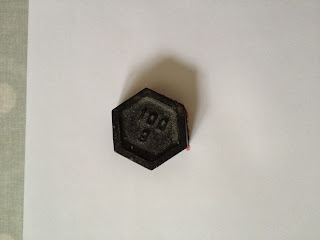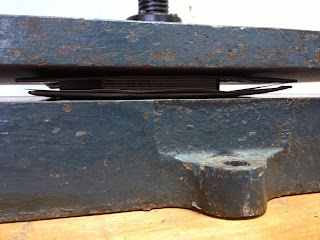We were then given a general overview of the year ahead and what is expected from us:
Studio Brief 1 - Individual
Studio Brief 2 - Collaborative
Studio Brief 3 - Reports
We were however told that although the first semester we will be concentrating on individual briefs, there is nothing to say that we can't collaborate. It is still an option we can consider.
This then encouraged me to start thinking of possibilities where collaborative briefs are concerned. As I am currently working on several live briefs which can be included in this module. In terms of live briefs, I personally feel as though I will gain more from them in comparison to competition briefs. Although I am sure I will discover that there are pros and cons to both. I started to list any possible contacts I currently have that I could contact regarding this module and came up with the following:
- Bar and Bistro - Opened by a family friend
- Cedar Farm Gallery connection - The possibility of designing there
- Summer work placement - The possibility of inquiring about a live brief
- A friend studying Graphic Design at another University - Meet up with him and collaborate perhaps or see if he knows anyone who may interest me
- Contact Sony - Through a relation who works there
- Contact the BBC - Through a friend who works there
- Third year - Have a discussion and get any advice
- Current design work - Any clients I am currently working for may need additional work in the future
- Third year Fashion student contact - Collaborate and brand her clothing or herself
- Second year Fashion student contact - Collaborate
We were then told that we have to complete a minimum of 5 briefs as well as other live briefs each and that we must take in to consideration the deadline, ensuring that they are all realistic.
The first brief we choose needs to be long enough for us to have time to evaluate as a class, as opposed to completing a brief by the end of next week, as this wouldn't work with our timetable.
We were then asked to do the following...
Identify things I want to get out of this module?
- Knowing how much to charge for live briefs
- How many changes to allow for live briefs
- Successful websites to use in the future
- Develop all skills (editorial, branding, etc)
- Build even more contacts
- Improve being able to improvise
- Perhaps contact studios abroad/in Vancouver/Fabien Barral (inspirational designer) and see if there would be any opportunity in the future to work with them
Class discussion of our thoughts
- Time management/discipline
- Deliver what I promise
- Understanding time scale
- Award/prize/fame
- Exploitation - Payment
- Range of briefs
- Understand brief - brief analysis
- Exposure
- Portfolio development
- Portfolio with a range of briefs - coherent
I suggested
- Effective professional communication
- Creative compromise
- Building contacts and opportunities
Why do you think live/competition briefs are going to be useful?
- We will learn how to interact professionally
- Public eye - exposure
- Work with a variety of deadlines - could vary a lot
- We will learn a lot about ourselves - some of us may discover that we don't like working for a variety of clients and looking for them ourselves, but instead prefer studio work
- We will discover new strengths/weaknesses
- Meet new people
- Help us to understand who we are as designers/specialism
At this stage we were then told that ISTD gives brutal feedback, so if we do ever decide to submit work for a live brief, we may receive feedback we hadn't expected.
Class discussion of our thoughts
- Improving professional design skills
- Challenge of professional brief
- Push past university - shows commitment beyond university work
- Clearer/effective working practices
- Real work bench marking
- Professional responsibilities
- Gain confidence
- Contacts
- Professional feedback
I suggested
- Professional experience - freelance/studio
We were then asked to look at the briefs we had brought to the session and write down why we had chosen each of the briefs. I came up with the following reasons:
The Body Shop
- Ethical morals tie in with my current practice
- Packaging is something I am passionate about
- I love their branding
- Greener packaging
Greenpeace
- Serves an important purpose
- Links to graphic design in a more functional sense
CA Cosmetics
- Made me think of the designs of cosmetic labels on products we have at home (one in particular) which I would find inspirational when fulfilling this brief
- Label design is something new to me
Deriviations
- Organic skin care - green technology
- Eco-friendly
Fortnum & Mason
- Already researched thoroughly over Summer
- Packaging brief with a specific need and purpose - helping and making a change for people on expeditions
Class discussion of our thoughts
- Straight forward
- Short
- Outside of comfort zone
- Free to enter
- Familiarity
- Prize
- The best that were available
- Creative scope/freedom
- Range of problems
I suggesed
- Ethical morals
After we had discussed all of our thoughts Fred made a very important point and said that it is all about what you can get out of a brief in terms of why you should choose a certain brief to do. Whether it be social, cultural, political or ethical, it is always worth researching and analysing the brief before actually fulfilling it.
After the break we were then put in to groups of 5 or 6 and asked to look at YCN briefs. Our group was given a brief on Churchill. I took photographs of it:
We were then asked to answer a set of eight questions and just had a couple of minutes to answer each as a group:
Before answering the questions however, we were asked by Fred whether each of our briefs were good and whether they had lots of information and specific requirements. Having just read the briefs we all came to the conclusion that even if they are informative and specific it doesn't necessarily mean they are good. However later on in the session we discovered that in fact, these competition briefs are actually not that specific once pulled apart and analysed.
1. What is the problem?
- Younger generation not aware of Churchill.
2. What is the brief asking you to do about it?
- Inform and educate 11-18 year olds.
3. What is the brief trying to achieve?
- Awareness and recognition of Winston's face.
4. Who will benefit?
- Parents, schools, Churchill branding.
5. What is the message?
- Winston Churchill is the greatest Brit of all times and children should be aware of who he is.
6. Who is the audience?
- Children, parents.
7. How will the message be delivered?
- Appropriate mediums.
8. Can you foresee any problems with the brief?
- Unsure about the tone of voice.
- Anonymity of Churchill.
We then discovered the bigger problems of all five briefs as a class:
- Companies going bust
- Help us please
- Want to make more money
- Companies will benefit
- It costs them nothing
- Harvest ideas - feed us dinner - then they use our work
Entering an agreement which you get no credit for - READ SMALL PRINT.
Try and prevent getting ripped off and ask yourself - WHAT ARE YOU GAINING?
The benefits way outweigh the terms and conditions (you may make contacts).
We then asked ourselves a similar question to earlier, regarding whether the brief is specific and decided:
- Unclear
- Not very helpful
- Not specific
This session made it clear to me that brief themselves haven't been throughout as well as they could be. For example - Churchill are trying to sell home insurance to 11-18 year olds.


























































